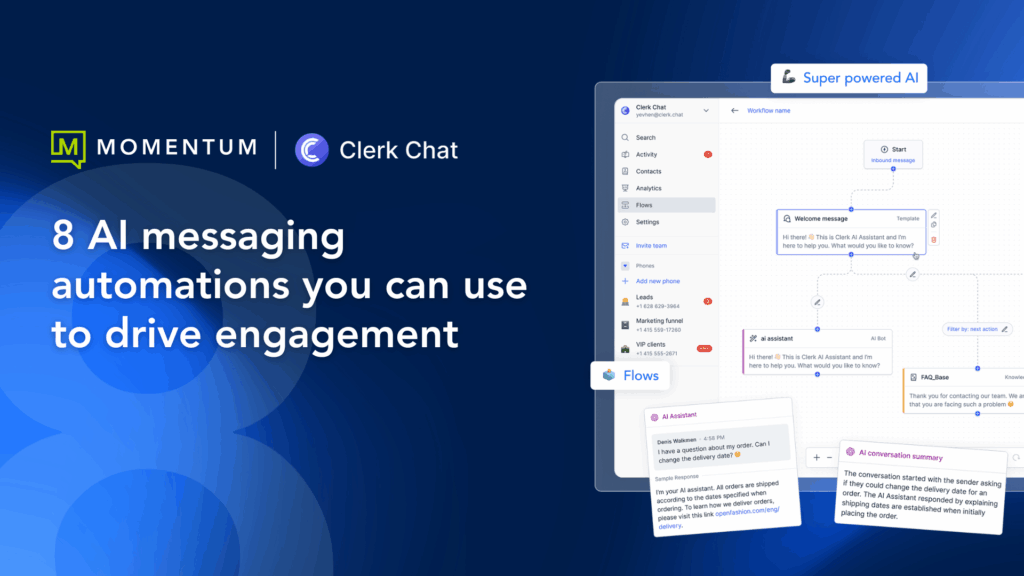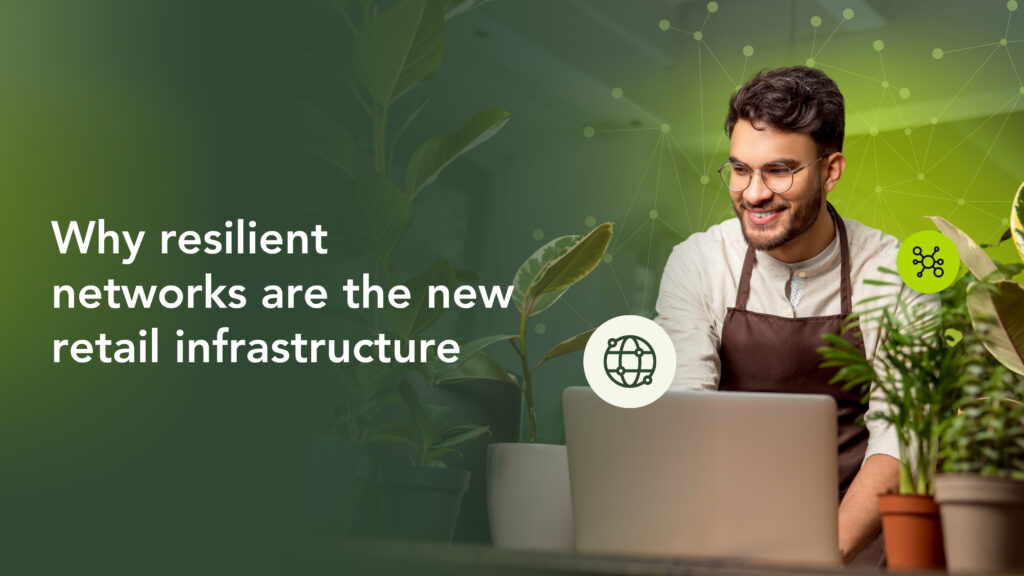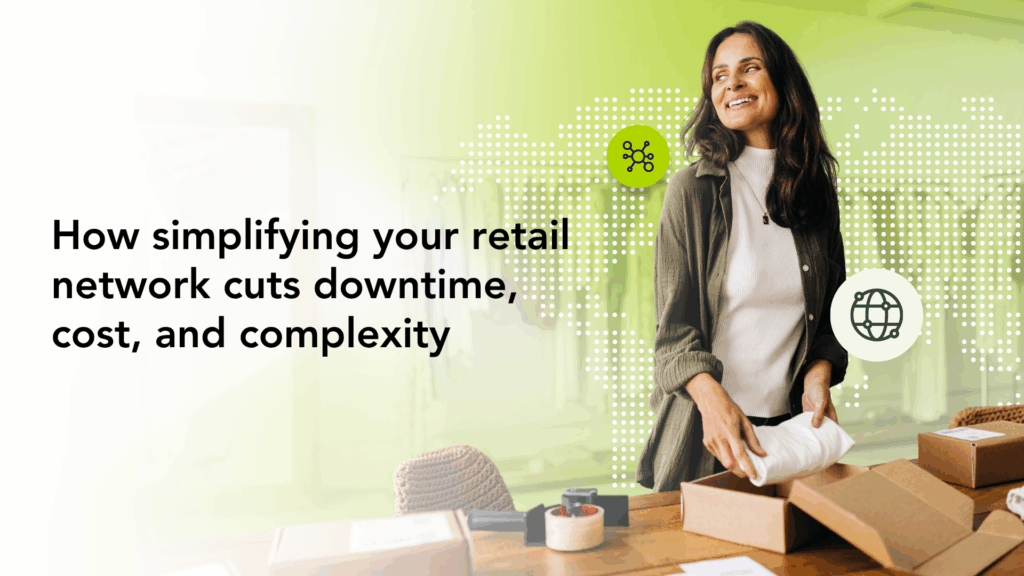A store’s connection is its heartbeat. When it drops, everything pauses, including transactions, customer service, and even employee communication. Shoppers abandon carts, payments fail, and store teams scramble to recover with little visibility into what went wrong.
For retailers, business continuity shouldn’t be seen as an IT checkbox, but rather as a form of revenue protection. Each minute of downtime chips away at sales and trust, creating ripple effects that extend from the checkout line to corporate operations. In fact, a whitepaper by Scale Computing pegs the cost at $1.1 million per hour for retail.
Yet many retail networks are still built for stability, not resilience. They rely on manual intervention when something breaks, hoping backup lines or secondary systems will hold until someone fixes the issue. That model no longer fits a world of real-time transactions, distributed stores, and customer expectations that never pause.

True continuity means more than having a backup connection waiting in the wings. It’s an operating strategy, one where failover, prioritization, and automation work together behind the scenes to keep every transaction moving, even when the unexpected happens.
The real-world cost of downtime
Downtime hits fast and spreads quickly. A single store losing connectivity during peak hours can trigger thousands in lost sales and a chain reaction of operational slowdowns across the business.
When systems go dark, every process feels it:
- Point-of-sale terminals stop authorizing payments.
- Inventory systems lose sync with distribution centers.
- Loyalty programs stall, leaving customers waiting.
- Store teams lose access to internal communication tools when they need them most.
According to industry estimates, downtime costs the top 2,000 companies $400 billion a year, while Scale Computing estimates that retail downtime averages $1.1 million per hour.
The impact cuts across every layer of the business, from lost transactions and staffing inefficiency to supply chain delays and missed insights.
And the triggers are often small. A damaged fiber line, a misconfigured router, or a local provider issue can take multiple locations offline at once. The difference between a minor disruption and a major outage comes down to how quickly the network detects the issue, reroutes traffic, and keeps critical systems running.
Business continuity begins with that ability: a network resilient enough to absorb failures and smart enough to adapt in real time.
Continuity is more than backup connections
Most retailers think of continuity as redundancy, as an extra internet line, a cellular failover, or a second provider waiting in reserve. Those safeguards matter, but continuity is more than simply having a backup. It’s about what happens in the moment an outage occurs, and how intelligently the network responds.
Why redundancy alone falls short
Traditional backup setups are static. A secondary LTE line may exist, but it often sits idle until manually activated or configured to take over everything at once. That approach can keep the store online, but it doesn’t guarantee the systems that matter most, like point-of-sale or payment terminals, get priority access to bandwidth.
Imagine a busy retail location on Black Friday. The primary fiber link drops, triggering failover to LTE. Without intelligent controls, every connected system competes for the limited backup bandwidth: employee devices, music streaming, cameras, digital signage, and POS terminals all fight for space. Transactions lag, and customer lines grow even as the store remains “online.”
Intelligent continuity prioritizes what matters first
True business continuity is selective. It keeps critical systems alive and non-essential systems contained. Advanced networking platforms allow IT teams to define these priorities in advance, automatically assigning bandwidth to POS, voice calls, and essential collaboration tools during a disruption.
This isn’t manual traffic management. The system monitors conditions in real time, reallocates bandwidth, and reestablishes connections based on business rules. The result is a store that continues processing payments, maintaining voice calls, and syncing sales data even when network capacity is limited.
Go from reactive response to real-time orchestration
In modern continuity strategies, detection and correction happen in seconds. The network identifies a disruption, shifts to the best available connection, and restores performance without human intervention. Employees often don’t notice anything has changed.
This orchestration turns continuity from a safety net into an operational advantage. Instead of hoping failover works, retailers can rely on automated intelligence to protect uptime precisely when it’s most at risk, as customers are ready to buy.
Automation that works while you’re offline
In retail, most outages happen when no one’s watching. Overnight updates, regional provider maintenance, or simple equipment failures can disrupt connectivity long before anyone’s in the store to notice.
That’s where automation makes the difference between lost revenue and seamless continuity.
Self-healing networks that detect and adapt
Modern network infrastructure can detect anomalies within milliseconds, long before they escalate into full outages. When performance dips or a link fails, the system automatically reroutes traffic through the next best path, preserving application performance and uptime without human intervention.
These self-healing functions don’t just react, they learn. By tracking performance trends across locations, the network can predict where congestion or degradation is likely to occur and adjust proactively. For a retailer with dozens or hundreds of stores, that level of intelligence turns downtime into brief, invisible transitions.
Remote monitoring and zero-touch remediation
Automation extends beyond routing. Remote management tools constantly monitor connections, devices, and application health across every site. When issues arise, scripts and predefined workflows execute automatically, restarting services, switching links, or allocating bandwidth based on pre-set business priorities.
For IT teams, that means fewer late-night calls and less reliance on on-site staff to troubleshoot. Even small issues, like a lagging POS terminal or voice delay, can be identified, isolated, and corrected before anyone reports a problem.
Always-on continuity that scales with every location
As retailers grow, automation ensures consistency. New stores can be onboarded quickly with preconfigured templates that apply the same network policies, bandwidth rules, and security controls from day one. Each site becomes part of a larger, intelligent ecosystem that adjusts in real time to keep operations running smoothly across every region and timezone.
Automation shifts continuity from reactive maintenance to continuous assurance, quietly working in the background so stores, staff, and customers never feel the disruption.
How a managed approach changes everything
Even the most advanced automation needs the right structure behind it. Retail continuity depends on a network that’s not only intelligent but also unified and built, monitored, and supported through a single point of accountability.
- One partner, one process: Managing multiple vendors means juggling contracts, SLAs, and finger-pointing when something goes wrong. A managed framework brings it all together, including connectivity, SD-WAN, voice, and collaboration, so every piece is designed to work in sync. One support call replaces a chain of escalations, and resolution happens faster because there’s no question about who owns the problem.
- One bill, predictable costs: Consolidation simplifies accounting as much as operations. Instead of reconciling dozens of separate invoices for connectivity, hardware, and software, retailers receive a single, predictable bill that scales with store count and bandwidth needs. That clarity makes budgeting easier and helps leaders see the true cost of keeping the business online.
- Always-on monitoring and support: A managed approach means eyes on every connection, 24/7. Network health, uptime, and performance thresholds are tracked continuously, and alerts trigger instant remediation when anomalies appear. If human intervention is needed, the same team that manages your network resolves it, so there are no handoffs or delays.
- Consistency across every location: Each store runs on the same policies, bandwidth rules, and configuration templates. That consistency makes it easier to roll out new locations, maintain compliance, and ensure every site delivers the same connected experience.
- A simpler path to uptime: When the entire stack, including connectivity, networking, and communication, is managed through one partner, the complexity of retail IT shrinks dramatically. What once took multiple tickets, vendors, and days now takes one call and a fast resolution.
A managed network brings clarity and consistency to every location. With one framework overseeing every store, system, and connection, continuity becomes a built-in advantage that’s reliable, predictable, and ready for whatever comes next.
Turn downtime into uptime with a connected retail network
Resilience starts with design. When every store, system, and connection runs on a unified foundation, uptime becomes a driver of revenue, customer trust, and competitive advantage.
Momentum helps retailers strengthen continuity through unified connectivity, intelligent networking, and always-on monitoring that’s all managed through a single point of contact. It’s the easiest way to simplify operations and stay ahead of disruption.
Ready to build a retail network that never stops moving? Book a meeting to explore how a connected, managed approach can reduce downtime, control costs, and keep every store running strong.



